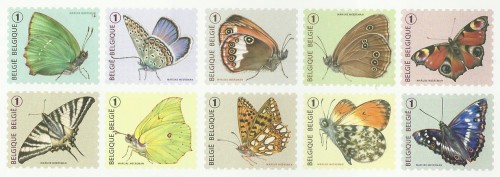Massive amounts of observation data recorded by amateurs are available for butterflies, allowing scientists to study their population dynamics and response to environmental threats. They report serious declines in many rarer species leading to an overall loss in biodiversity. As these declines reflect the impacts of land use change, climate change and pesticide use, they also provide an alarm system to warn of imminent dangers to other, less visible parts of our natural environment. Michael Gross reports.
Pesticides used in agriculture are among the factors that may harm butterflies — in some cases even intentionally, when their caterpillars are considered pests. Neonicotinoids, systemic pesticides once introduced to limit the toxic effect to the insects that attack the actual crop plant they protect, have in recent years caused widespread concern due to their persistence in the environment, which is believed to harm non-target species like bees even at concentrations below the acute toxicity threshold. Knockon effects are even noticeable invertebrates depending on insect prey, including birds (Curr. Biol. (2014) 24, R717–R720). In a recent study, Andre Gilburn from the University of Stirling, UK, and colleagues used volunteer observations made between 1984 and 2012 to find statistically significant correlations between butterfly population trends and environmental factors, including temperatures and neonicotinoid use. Out of the 17 species investigated, the researchers identified 15 that appeared to decline in line with the use of these systemic pesticides (Peer J. (2015) 3, e1402, http://dx.doi.org/10.7717/peerj.1402). The authors also note that butterfly declines are dominant in England, where the use of neonicotinoids is widespread, whereas populations have remained stable in Scotland where these are much less widely used.
Source: Michael Gross.Current Biology 26, R823–R837, September 26, 2016

- Login om te reageren
